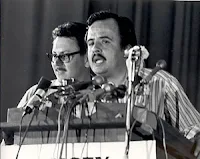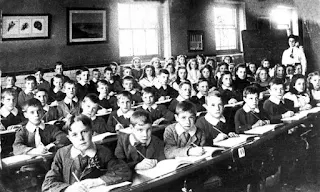In my opinion, we should teach our students about each other’s culture and history, however, white Anglo-Saxons aggressively force assimilation and imposed their view on how immigrants should be Americanized through the education system.
Other cities like Topeka, Kansas faced issues of race and segregation within the public schools. Despite the millions of dollars invested to an integrated school, many African Americans were shunned from school activities. Blacks and whites students had different activities programs such as prom, student governments, and sports teams. This led to the case of Brown vs Board of Education of Topeka in 1954. The law was named after Linda Brown who as denied entrance’s to Topeka’s white elementary school. This was a violation of the 14th Amendment of the Constitution which clearly states no state can “deny to any person within its jurisdiction the equal protection of the laws.”
 Other organization like the NAACP (National Association for the Advancement of Colored People) sent lawyers throughout the south to gather evidence to prove segregated schools were not equal. The NAACP main objective was to end inequality in schools which they hope can lead to segregation in America.
Other organization like the NAACP (National Association for the Advancement of Colored People) sent lawyers throughout the south to gather evidence to prove segregated schools were not equal. The NAACP main objective was to end inequality in schools which they hope can lead to segregation in America.Historian James Anderson mentions that many African faculty school members faced an enormous struggle on bringing equality education for black children. African American teachers were usually dismissed from the school system after Black principals were fired or demoted. Anderson says that “We may be achieving racial balance, we may be undoing the separate part of it, but we at the same time are exacerbating the unequal part of it.” – James Anderson
School teacher and the soon to be President of the United States in the 1960s Lyndon B. Johnson believed in the equal chance of education meant an equal chance of life. Here are three main accomplishments from Lyndon B Johnson:
- Created a wide-ranging federal program
- Started low-cost college loans help low-income students
- Signed the Civil Rights Act of 1964 (This plan was focused on defunding school that was still segregated).
Going back to the Chicano civil right activist Jose Angel Gutierrez from Crystal City helped organized massive student movements to create an educational program. This program consists of respected the lives as Mexicans Americans. To not only respect the Mexican students their native tongue but to push for more academic educational programs of Mexican Americans. Other laws like “Title IX” allowed women to participate in a sports team and not to be discriminated based on their gender. After the law was passed, the percentage of women joining sports teams grew significantly, especially in the 1990s.
There are no doubts there were numerous obstacles that students, activists, and parents faced improving public schools. The struggle continues to this current day.









